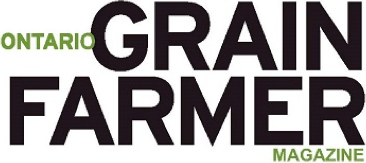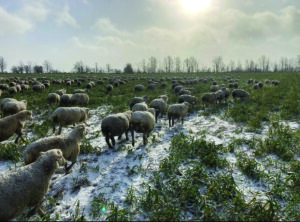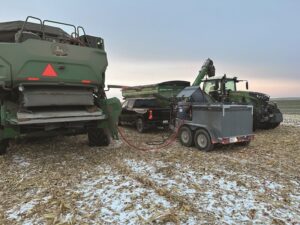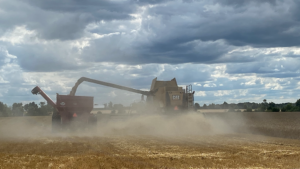Taking advantage of market demand
ONTARIO’S SOFT RED WINTER WHEAT SUCCESS
ACCORDING TO LEGENDARY investor Warren Buffet, “A rising tide lifts all boats. It is not until the tide goes out that you realize who is swimming naked.”
For commodity prices in general, as measured by the CRB Index (a basket of prices for energies, metals, grains, etc.), high tide was June 2008, followed by a vicious collapse through the economic and liquidity crisis into 2009. This was followed by a respectable ‘dead cat bounce’ recovery into April 2011, and we have been in a downtrend ever since with the current level at a 12 year low, and below the recession lows.
The reasons for the broad commodity price declines are well known: the bursting of the Chinese economic bubble resulting in reduced demand for commodities; a strong U.S. dollar with correspondingly weak currencies in other countries that appear happy to sell at low prices; and the fact that despite massive worldwide monetary stimulus via ‘quantitative easing’, the world economy remains closer to deflation than inflation, with at best flat line growth prospects.
WHEAT
Turning more specifically to wheat, according to the U.S. Wheat Associates, 2015/2016 global wheat production will be 733 million metric tonnes (MMT), which is the third consecutive record crop. Ending stocks for 2015/2016 are projected to be a record high 227 MMT.
In addition, the strong U.S. dollar has reduced the ability of American exporters to compete on the markets, and projected ending stocks (specifically in the U.S.) are expected to grow 24 per cent above the five year average to 24.8 MMT. U.S. export volumes are expected to fall to their lowest levels since the early 1970s. The American farmer is piling wheat on the ground and refusing to sell into these low prices, creating an overhang of grain to be sold on any rally. There is nothing particularly bullish or price positive about the story so far!
In fact, there appears to be little hope for a broad based trend change in price until either the Chinese economy turns around and/or currency trends reverse. More specifically for grains, a weather event (El Nino) could also change the direction of the tide. The best guess is a continued drift lower in prices, occasionally interrupted by profit taking on short covering rallies from the speculative funds. Farmers should be alert and use resting orders to sell into these counter trend rallies.
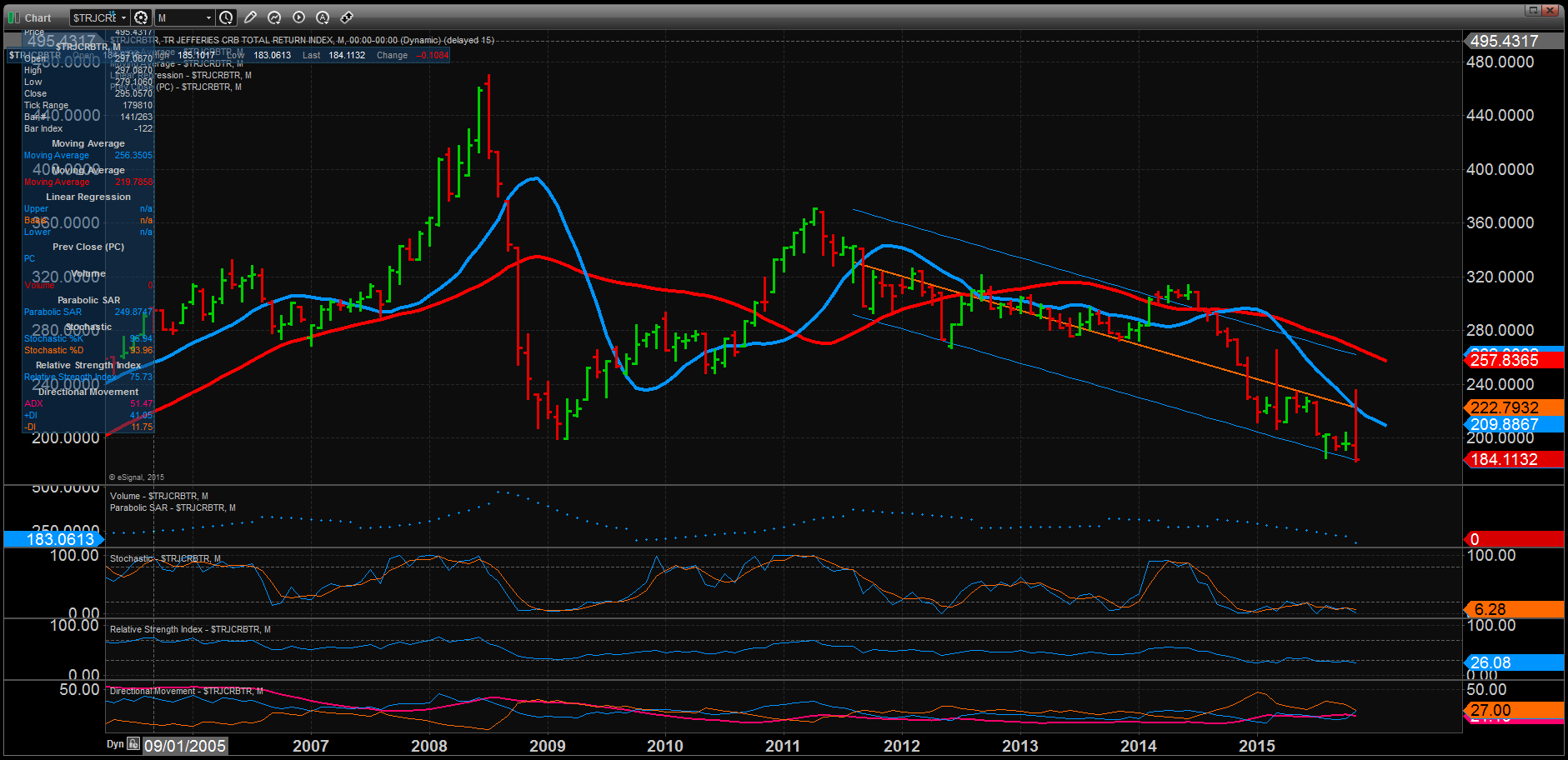
ONTARIO
In the context of these broad themes, most of Ontario’s soft red winter (SRW) wheat can be considered a ‘diamond in the rough’. How? It boils down to a rare, but good old fashioned shortage of milling quality SRW wheat in the Great Lakes Region.
Due to very untimely rains in June 2015, the overall milling quality of SRW in the neighbouring states of Michigan, Ohio, Indiana, Illinois, and Missouri was very poor. Much of the crop suffered from some combination of high vomitoxin, low falling number, lower test weight, and higher moisture. Deep southwestern Ontario counties south and west of London also faced high vomitoxin levels, making most of that wheat also unsuitable for human consumption. However, fields generally north and east of London had absolutely perfect quality grain. Congratulations to growers in this area, as you had the best quality SRW wheat in the world this year!
Unfortunately, there was not much of it. Due to difficult planting conditions in the fall of 2014, Ontario producers were only able to seed a below normal amount of 630,000 acres. Approximately nine per cent of these acres were re-seeded into other crops, so harvested acres were only 575,000 (some trade estimates are as low as 500,000 acres).
Ontario winter wheat production is estimated at only 1.2 million metric tonnes (MT). Assuming 40 per cent of this total was feed grade primarily south and west of London, the remaining 60 per cent milling grade winter wheat supply is 720,000 MT vs. one million MT core demand.
U.S. dollar basis levels for Ontario SRW responded during harvest 2015 with record high levels, rising to levels high enough to ensure no SRW stocks will be exported out of the Great Lakes region this year, or be put into the feed market. This, combined with the low Canadian dollar, the relatively tight price spread between Chicago SRW futures and Minneapolis hard red spring (HRS) futures, and ‘normal’ to weak basis levels for hard red winter (HRW) and HRS, has led to extraordinarily tight price differences between SRW and the normally much higher priced HRW and HRS wheat crops. In November, HRS futures had a 17 cent premium over SRW, versus a 30 month average of 90 cents.
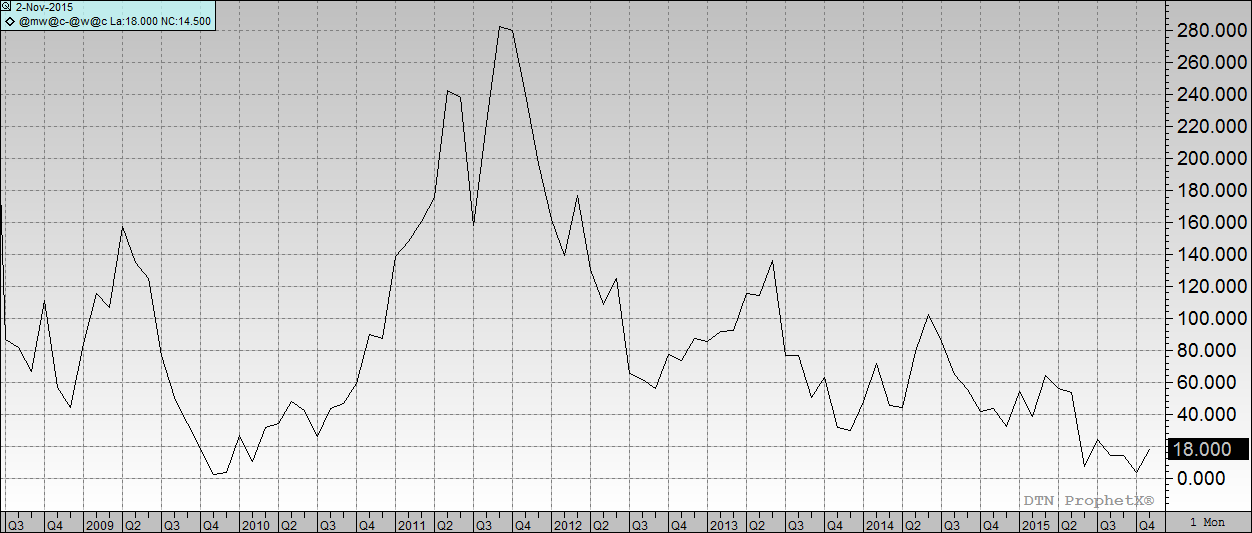
2016 POTENTIAL
Looking ahead to harvest 2016, Ontario farmers have planted 1,000,000 acres this fall under ideal planting conditions, so a 2.2 million MT projected wheat harvest in 2016/2017 may understate the production potential. Weather permitting, and if all goes well, we will have nearly double the supply of SRW wheat (and perhaps triple the supply of milling quality) and a return to ‘normal’ market conditions. Price spreads at the Ceres Global Ag Corp. terminal in Port Colborne move from a $10/MT premium for HRS over SRW for spot delivery in fall 2015, to more traditional $55/MT HRS and $25/MT HRW premiums during harvest 2016.
Dana Omland is grain merchandising manager for Ontario with Ceres Global Ag Corp. Ceres is a Toronto headquartered and TSX listed agriculture and commodity logistics company, with handling facilities that include deep water marine terminals in the Great Lakes including Port Colborne, ON. Trading offices are in Minneapolis, MN and Guelph, ON. Website: www.ceresglobalagcorp.com. •
